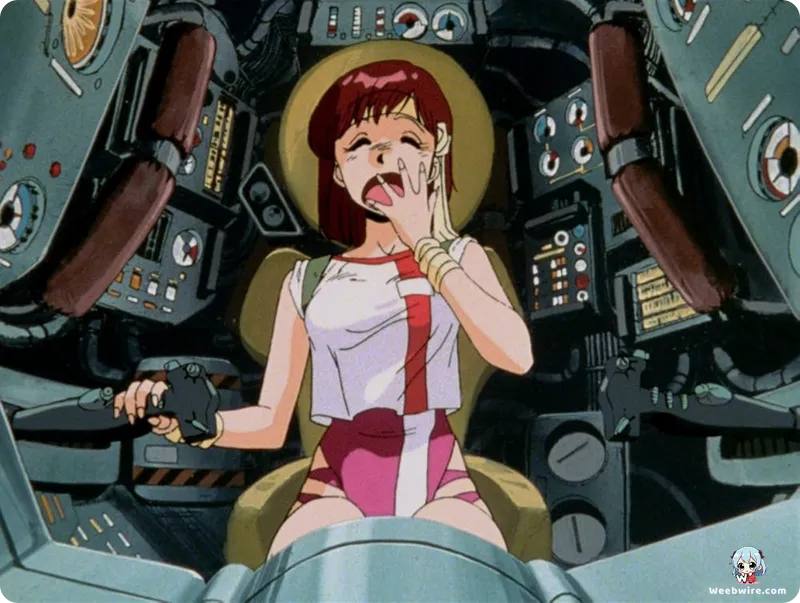Gunbuster: Unpacking the Groundbreaking OVA That Launched Hideaki Anno and Defined a Studio

Uncover the profound legacy of Gunbuster, known in Japan as Aim for the Top! Gunbuster (Top o Nerae! Gunbuster), a groundbreaking 1988 original video animation (OVA) from the nascent Gainax studio. This six-episode masterpiece transcended its premise of giant robots battling space monsters to become a foundational pillar of anime, rich with pioneering innovations and captivating behind-the-scenes insights.
Hideaki Anno's Pivotal Debut
Gunbuster is most notably the pivotal directorial debut of Hideaki Anno, the visionary behind Neon Genesis Evangelion. Long before Evangelion's psychological depths captivated the world, Anno honed his craft here, experimenting with dynamic camera angles, high-octane action, and a blend of earnest heroism with profound emotional stakes. Many stylistic and thematic elements, such as the exploration of trauma, self-doubt, and the burden of heroism, that later defined Evangelion can be traced directly to their formative expressions in Gunbuster, making it essential viewing for any Anno enthusiast.
The Iconic Gainax Pose
The series also holds a unique place in anime history as the origin of the iconic 'Gainax Pose.' This signature stance, featuring a character with defiantly crossed arms, was popularized by protagonist Noriko Takaya. It became an instantly recognizable symbol of Gainax's style and the unwavering resolve of its characters, widely emulated and parodied across the industry, a testament to its cultural impact.
Scientific Accuracy and Emotional Depth
One of Gunbuster's most remarkable features is its ambitious pursuit of scientific accuracy, particularly regarding relativistic time dilation. As Noriko and her partner Kazumi venture deep into space, the effects of near-light-speed travel mean time passes dramatically slower for them than on Earth. This is not just a sci-fi gimmick; it is a central emotional pillar. The crushing reality of returning home to find decades or centuries have passed, with loved ones long gone, adds a profound layer of melancholic drama to the action-packed battles. This commitment to depicting the bittersweet consequences of deep-space travel with scientific fidelity was groundbreaking and remains incredibly impactful.

A Heartfelt Homage to Classics
Furthermore, Gunbuster serves as a heartfelt homage to classic mecha and sci-fi anime. Anno and the Gainax team, as avid fans, skillfully wove in numerous references and tributes, from the super robot aesthetics echoing Mazinger Z to the space opera grandeur reminiscent of Star Wars and Space Battleship Yamato. Even the comically over-the-top attack names contribute to this loving tribute to classic shows.
Artistic Ingenuity Amidst Constraints
A striking artistic decision, born partly from ingenuity and partly from budget constraints, was rendering the climactic final episode almost entirely in black and white. This bold move was a deliberate artistic statement, intensifying the emotional weight of the finale, making sacrifices and triumphs feel starker, raw, and more impactful. It showcased Gainax's willingness to push creative boundaries and their ability to turn limitations into unique artistic opportunities. Indeed, operating on a shoestring budget forced incredible resourcefulness, leading to innovative animation techniques and a focus on dynamic visuals without excessive movement, a hallmark of early Gainax productions.
Ultimately, Top o Nerae! (Aim for the Top!) perfectly encapsulates the series' core message: striving for greatness and overcoming personal fears. Noriko's journey from a clumsy trainee to a courageous pilot embodies perseverance and growth. Gunbuster's masterful blend of heartfelt character drama, thrilling mecha action, and accurate sci-fi concepts, all within a visually inventive package, firmly secures its place as a foundational work in anime. It is a true testament to Gainax's early genius and Hideaki Anno's burgeoning talent, continuing to resonate for its action, emotional depth, and countless nods to the history of science fiction and anime itself. It truly aimed for the top, and unequivocally hit its mark.
Credits
Gunbuster
Author
Gainax
Cover Art
Yoshiyuki Sadamoto
Studio
Gainax
Publisher
Bandai Visual
Producers





